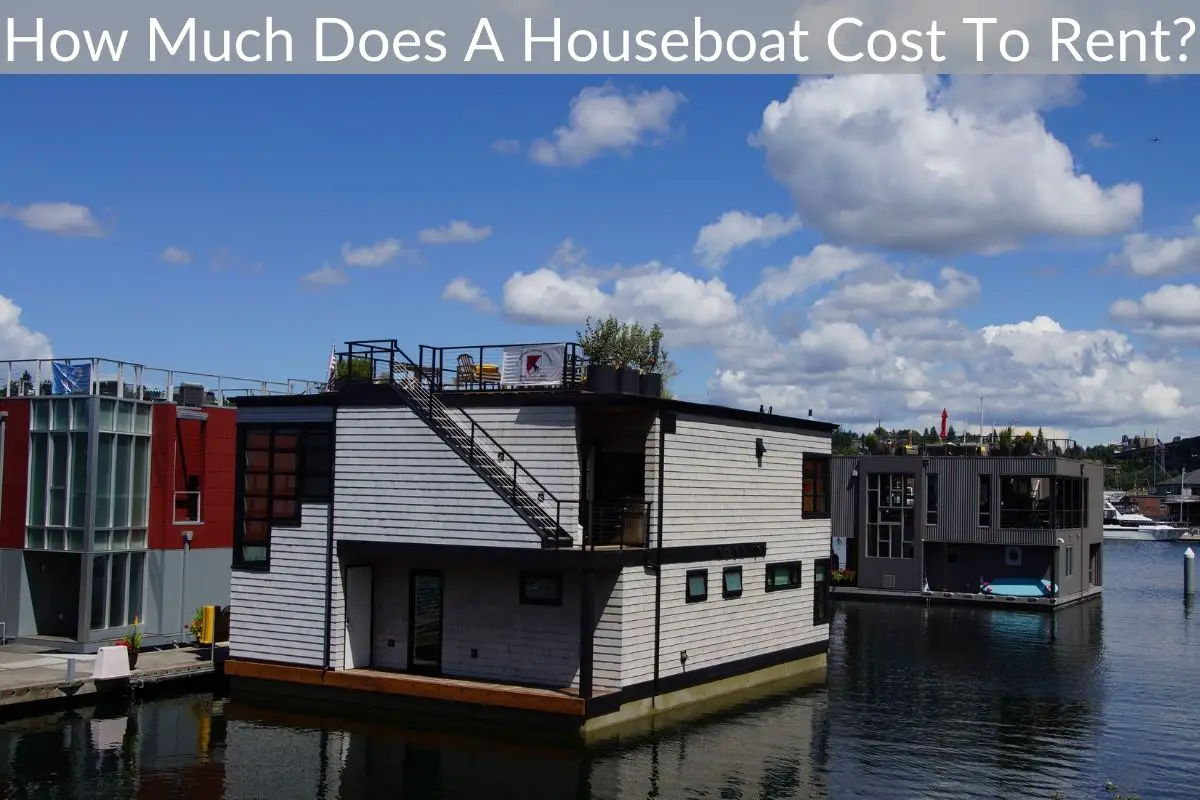Houseboats are boats with two or more rooms that resemble the setup of a home, typically built on a flat-bottomed hull. They are popular among travelers as well as local people because they provide most of the comforts that a normal house has.
*This post may contain affiliate links. As an Amazon Associate we earn from qualifying purchases.
Also, on a houseboat, you are closer to nature and can have a calm and peaceful time.
Due to its affordability factor, many people are getting the opportunity to experience houseboats more than ever before. However, like any other vehicle, houseboats are also vulnerable to wear and tear. Good maintenance and timely repairs are an important factor to keep the houseboat experience safe and good.
Numerous factors make the roof of a houseboat brittle. Exposure to UV rays, fluctuating weather conditions and simply prolonged usage are just a few of the things that will affect your houseboat roof.
A brittle roof is always dangerous and needs to be repaired as soon as possible to prevent damage to the wood underneath and other water related issues.
Knowing how to properly fix a houseboat roof and get it reposted with a gel coat is something every houseboat owner should know how to do.
Gelcoat will typically need to be applied to the houseboat roof in layers. You will want the coats to be thin enough where they will dry quickly and then to add multiple coats.
Typically gelcoat will take a few hours to dry fully but in between coats you can often get by with less time than that.
Before we get into more specifics on how to gelcoat the roof it is important for you know exactly what it is that you are putting on.
What is Gelcoat?
The outer surface of the roof on your houseboat has a special resin called gelcoat. Gelcoat is responsible for the colorful and shiny finish that you will see on the roof. Due to prolonged exposure to harsh weather conditions, the gelcoat gradually peels off, leaving the roof dull and chalky.
Mostly, what you are doing when you are gelcoating the roof is restoring it to its old state.
When it comes to repairs, some people look for DIY fixes to cut costs. However, there are many things that an untrained eye could ignore or miss. Knowing effective procedures from the experts is always a huge plus. Here are a few tried and tested tips on restoring the gloss/gelcoat on your houseboat roof.
Tips and tricks for houseboat roof gelcoating
Cleaning the fiberglass
The first step in your journey to restore the gelcoat on your boat is cleaning the fiberglass thoroughly. For cleaning, take a bucket of warm water and add a cup of detergent powder/liquid to it. Dip a sponge into this solution and clean the surface of the roof using the sponge. Do not clean with bare hands as you should always use gloves for protection.
Sometimes, a kind of fungus known as mildew might have also developed. To get rid of mildew, add some household bleach to the bucket of warm water and clean thoroughly. This cleaning solution may not be effective for certain stains such as waterline scum, fish blood, etc… For such stains, make use of concentrated cleaners made specifically for fiberglass surfaces.
Once you are done cleaning the roof, rinse the surface and allow it to dry.
Getting rid of the grease
An important tip is to remove grease from the surface if there is any on it. For best results, the surface should be free from grease and oil.
While cleaning solutions get rid of stains, they often miss greasy spots. Hence, it is recommended to dip a rag/cloth in a degreasing solution such as acetone or Methyl Ethyl Ketone (MEK). MEK can cause skin irritation and other health issues when inhaled. Therefore, protect your hands with thick rubber gloves and take care to not expose yourself to the chemical for long periods of time.
Waxing your houseboat
When your houseboat is still new, applying a layer of wax on it will keep it protected from harsh weather and your roof will last longer. Regularly applying wax on gelcoat roofs will keep the roof glossy for at least 15 years. The wax coating mainly protects the finishing on the roof, but it can act as a restoring agent too if the damage isn’t too bad.
For waxing your boat, use a foam pad or a cloth to polish the surface. Polishing should be carried out in a circular motion and once you are done polishing, apply wax to protect the glossy gelcoat finish on the roof of your houseboat.
Allow it to dry well and then use a soft cloth to buff away the excess wax. Certain cleaning products work as polishing waxing agents. You may use one of these to get the job done faster if you choose.
The rubbing compound
Sometimes, when the roof is left unattended for a long time, the damage caused is bad. No amount of polishing or waxing is enough to restore the shine. At such times, products called rubbing compounds will need to be used.
They contain powerful abrasives that do the job. Before using a rubbing compound on the roof, make sure to eliminate wax (if any). Immerse rag pieces in dewaxing solvents or toluene and use the rags to get rid of the wax.
Do not rub back and forth. Remove the wax in a sweeping motion, in one direction only.
Now, choose a rubbing compound made specifically for fiberglass surfaces. Use it just like you would use a polishing agent. Take care to not rub on the same spot for too long as the compound may begin to cut through the gelcoat.
After using the rubbing compound, polish it again and apply wax all over the surface. Watch the fiberglass get back its beautiful glossy look! Of all the tips mentioned here, the rubbing compound is the most powerful.
The gelcoat restorer
Today, many products on the market claim to be a one-stop solution to restore gelcoat on your boat. Gelcoat restorers are similar to polishing agents but provide a new surface for the roof. The results are better than those obtained with polishing and waxing techniques.
However, restorers have a drawback.
Restorers are mostly an acrylic coating on the surface, which means that they wear off easily or result in discoloration with use. They may also eventually become flaky and difficult to maintain.
Conclusion
If you are applying gelcoat by yourself, take care to apply it a thin coat at a time. Decide on how many coats you are going to need and proceed accordingly.
Gelcoats are mixed with chemical agents to quicken the hardening process which means that one you have to mix your gelcoat well, and two you need to have a plan on how you will apply the gelcoat before it begins to harden.
Also, the type and amount of catalyst used depend on the brand of gelcoat you are using. Be sure to choose your hardener accordingly. Gelcoat can be applied using either a roller or a sprayer but when applying, allow 1-2 hours for the gelcoat to set.









